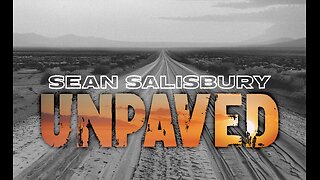Premium Only Content

How Humanity Almost Destroyed Itself
Humanity has faced numerous moments where its actions or decisions brought it perilously close to self-destruction. These moments span nuclear threats, environmental crises, pandemics, and technological risks. Here's an overview of some of the most critical examples:
---
### **1. The Nuclear Arms Race**
The Cold War saw the U.S. and the Soviet Union amass enough nuclear weapons to destroy the planet several times over. Key moments include:
- **The Cuban Missile Crisis (1962):**
The closest humanity came to nuclear war, when the U.S. and Soviet Union were on the brink of launching nuclear missiles over tensions in Cuba.
- **False Alarms:**
- In 1983, Soviet officer Stanislav Petrov ignored a malfunctioning radar system that falsely indicated a U.S. nuclear strike, preventing retaliation and global catastrophe.
- A similar incident occurred in 1995 when a Norwegian research rocket was mistaken for a missile by Russian forces.
---
### **2. Environmental Degradation**
- **Deforestation and Climate Change:**
Unchecked industrialization and deforestation have led to rising global temperatures, biodiversity loss, and extreme weather events.
- **Nuclear Accidents:**
- The **Chernobyl Disaster (1986)** and **Fukushima Daiichi Disaster (2011)** highlighted the dangers of nuclear energy mismanagement.
- **Ozone Layer Depletion:**
The widespread use of CFCs almost destroyed Earth's protective ozone layer, which was only reversed by the Montreal Protocol in 1987.
---
### **3. Pandemics**
- **The Black Death (1347–1351):**
This plague killed an estimated 25–30 million people in Europe, nearly a third of the continent's population.
- **Spanish Flu (1918–1919):**
Infected a third of the global population and killed an estimated 50 million people.
- **Modern Biological Risks:**
Advances in biotechnology could lead to engineered viruses or accidental pandemics, posing new threats to global survival.
---
### **4. Artificial Intelligence and Technology**
- **AI Misalignment:**
The rise of artificial intelligence carries risks, such as autonomous weapons, unregulated surveillance, or AI systems making catastrophic decisions.
- **Cybersecurity Threats:**
A large-scale cyberattack on critical infrastructure could destabilize nations, leading to economic collapse or even war.
---
### **5. Economic and Political Collapse**
- **The Great Depression (1929):**
Triggered widespread poverty and social unrest, fueling extremism and laying the groundwork for World War II.
- **Global Conflicts:**
- Both World War I and World War II saw unprecedented loss of life and destruction.
- The Holocaust revealed the dangers of ideological extremism and systemic oppression.
---
### **6. Space and Cosmic Risks**
- **Asteroid Impact:**
The Chicxulub asteroid that wiped out the dinosaurs serves as a reminder that a similar event could threaten humanity.
- **Solar Flares:**
A massive solar storm, like the Carrington Event of 1859, could destroy global power grids today.
---
### **7. Near-Misses**
- **The Y2K Bug (2000):**
Fears of technological collapse due to computer systems' inability to handle the year change highlighted humanity's reliance on technology.
- **Genetic Engineering and CRISPR:**
While these technologies hold promise, misuse could lead to unforeseen ecological or societal consequences.
---
### **Lessons Learned**
Humanity's resilience has been tested repeatedly, yet cooperation, innovation, and decisive action have often averted disaster. However, these events underscore the importance of vigilance, ethical leadership, and sustainable development to ensure our survival.
-
 27:08
27:08
Cowboy Kent Rollins
4 days ago $0.01 earnedHistory of a Cowboy Cook | A Day in the Life of a Chuck Wagon Cook
252 -
 LIVE
LIVE
RiftTV/Slightly Offensive
31 minutes agoAustin Metcalf’s Dad’s EMBARRASSING White Guilt MELTDOWN | The Rift Report
582 watching -
 32:40
32:40
The Brett Cooper Show
2 hours ago $0.40 earnedThe Feminist Celebrity Astronauts Who Saved the World | Episode 24
1.03K14 -
 1:35:12
1:35:12
Russell Brand
2 hours agoThe Pope Is Dead—What Happens Now? – SF569
102K66 -
 1:16:09
1:16:09
Sean Unpaved
3 hours agoWeekend Sports Blitz: Nico to UCLA, NFL Draft Hype, & Playoff Showdowns!
22.8K -
 21:42
21:42
SLS - Street League Skateboarding
10 days agoLuan Oliveira's Top SLS Moments: 2013 & 2014
15.7K2 -
 51:38
51:38
Grant Stinchfield
22 hours agoCollege Sports Crisis? Athletic Directors Beg Congress to Step In on Athlete Pay Chaos
9.62K -
 1:02:27
1:02:27
Timcast
3 hours agoDemocrats PANIC As MS-13 SUpport BACKFIRES, Senator DROPS Support For Abrego Garcia
151K129 -
 1:55:36
1:55:36
The Charlie Kirk Show
3 hours agoThe Next Pope? + Second Signal Chat + Maher Aftermath | Knowles, Marlow, Turek | 4.21.25
74.6K29 -
 1:08:08
1:08:08
BitLab Academy
5 hours ago $1.18 earnedCrypto Mega Pump Signal Flashing | Bitcoin Breakout, Altcoin Alt Season Starting?
28.4K2